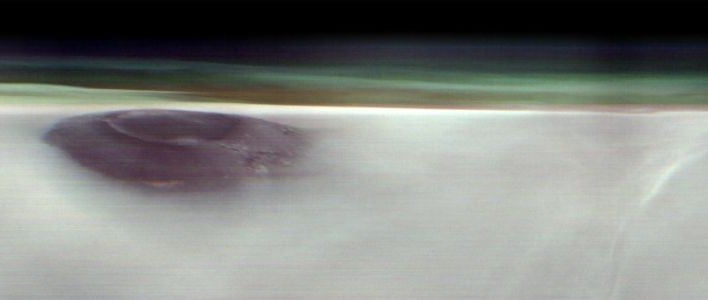NASA Orbiter Captures Amazing Shot Of 12-Mile High Martian Volcano Above Cloud Tops

Arsia Mons, an ancient Martian volcano that last erupted some 50 million years ago, stands an astounding 12 miles (20 kilometers) high, making it higher than Earth’s largest volcano, Mauna Loa (at roughly 2.5 miles or 10.5 miles when measured from its sea floor depression). Part of the Tharsis Montes range, Arsia Mons' immense scale is a sight to behold, even through the atmospheric haze, usually consisting of water ice clouds. These cloud formations are particularly dense when Mars is at its farthest point from the Sun, influencing the planet's atmospheric circulation and weather patterns.
To achieve this unique horizontal perspective, the 2001 Mars Odyssey spacecraft performed a 90-degree rotation while in orbit. This maneuver allows its camera, originally designed to meticulously map the Martian surface, to snap these wide-angle atmospheric shots. The series of images obtained through such observations enables scientists to track seasonal changes in both dust and water ice cloud layers. This long-term monitoring is crucial for understanding the evolution of Mars' atmosphere over time and for deciphering the complex mechanisms behind phenomena like the planet's notorious dust storms.
The orbiter’s Thermal Emission Imaging System (THEMIS), a versatile instrument capable of viewing Mars in both visible and infrared light, plays a pivotal role in these discoveries. Beyond imaging, THEMIS also aids in the identification of subsurface water ice, a critical resource for future human exploration, and continues to contribute to the ongoing study of Mars’ two small moons, Phobos and Deimos.

